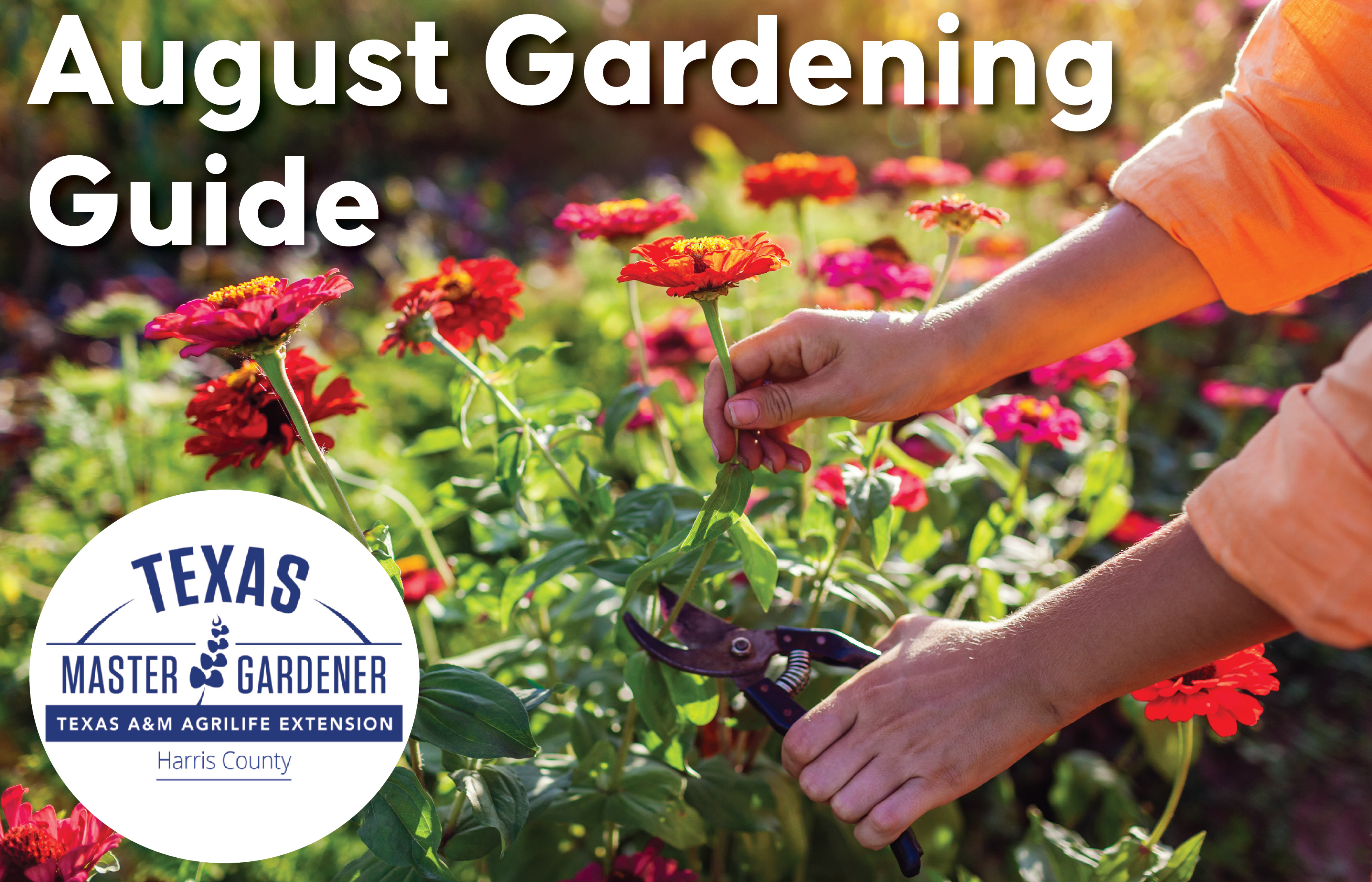
Harris County Master Gardener Shares Wealth of Gardening Tips for August
This information has been generously provided to Harris County residents free of charge by the Harris County Master Gardeners, an expert group of trained volunteers assisting Texas A&M AgriLife Extension Service in educating the community using research-based horticultural information.
Did you know that the Harris County Master Gardeners offer free training, events and other resources all year round? To learn more, visit hcmga.tamu.edu.
By Karen Shook, Harris County Master Gardener
Even though we have had a relatively wet spring, the hot summer months call for vigilance. Watering guidelines typically have advice about depth of watering for specific plants (6 inches for the lawn, 12 inches for established trees). One test is to use a long handled, flathead screwdriver. It will push through wet soil easily but become more difficult to push when you reach dry soil. Push down until you meet resistance, grab at the soil surface to pull out and check depth. On your daily walk through your neighborhoods and gardens, look for plants that still look good in the heat and consider using them in your garden.
Keep your beds mulched to help retain moisture and keep roots cooler.
July and August are good months to make plans for fall and spring gardens (in air-conditioned comfort).
Annuals
- If annuals are still actively growing/blooming, they may benefit from an application of balanced fertilizer. Continue to deadhead spent blooms.
- Even heat tolerant annuals may look tired. If they have stopped growing/ blooming, consider replacing with heat tolerant or perhaps foliage plants.
Bulbs
- Prune ginger and canna stalks to ground after blooms fade.
- If iris foliage is brown, cut it off. Work a little bone meal or compost around rhizomes being careful not to disturb them too much.
Roses
- Keep up with pest and fungus controls (every 7 to 10 days) and feeding (every 4 to 8 weeks). Keep yellow, dropped leaves cleaned out of the beds.
- Late August is the time for summer pruning of roses (other than once blooming). Reduce size by 1/3 (or to desired height) making cuts just above an outward facing bud. Re- move dead wood, diseased canes, twiggy growth. Fertilize and water after pruning.
Shrubs
- Watch those shallow rooted azaleas, they are drought vul- nerable and are setting buds for spring bloom.
- If needed visually, prune out dead, diseased wood from shrubs, but wait until mid- winter for serious pruning.
Lawns
- Sod can be laid in bare areas. Water it in well.
- The largest population of chinch bugs is typically late summer to early fall. If you see irregular patches of dead or stunted grass particularly in sunny areas near driveways or curbs, check for chinch bugs.
Ground Cover
- If your groundcover is looking sad, shear it back with lawn mower or trimmer, then water it well.
Edibles (vegetables, herbs, berries, fruits)
- If you want to grow your Halloween pumpkin, it is time to plant the seeds.
- Stop fertilizing fruit and nut trees to prepare for winter dormancy.
- See the following link for recommended planting times: Harris County Vegetable Planting Guide
Trees
- Snip off spent blooms on crape myrtle before they set seed. Fertilize. Snip off spent blooms on vitex.
Want to go deeper? Visit the Harris County Master Gardeners' Urban Dirt Index for a plethora of information about gardening in your region at hcmga.tamu.edu/urban-dirt-index. Submit your horticulture questions to the Harris County Master Gardeners at hcmga.tamu.edu/ask-a-question.
Source: Harris County Master Gardeners










